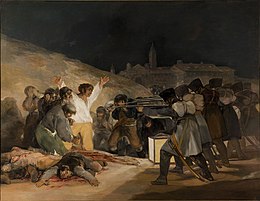
Back قتل خارج نطاق القضاء Arabic বিচার বহির্ভূত হত্যাকাণ্ড Bengali/Bangla Execució extrajudicial Catalan Extralegale Hinrichtung German Ejecución extrajudicial Spanish Exekuzio estrajudizial Basque قتل فراقضایی Persian Exécution extrajudiciaire French הוצאה להורג ללא משפט HE Pembunuhan di luar hukum ID

An extrajudicial killing (also known as an extrajudicial execution or an extralegal killing)[1] is the deliberate killing of a person without the lawful authority granted by a judicial proceeding. It typically refers to government authorities, whether lawfully or unlawfully, targeting specific people for death, which in authoritarian regimes often involves political, trade union, dissident, religious and social figures. The term is typically used in situations that imply the human rights of the victims have been violated; deaths caused by legal police actions (such as self defense)[1] or legal warfighting on a battlefield[2] are generally not included, even though military and police forces are often used for killings seen by critics as illegitimate. The label "extrajudicial killing" has also been applied to organized, lethal enforcement of extralegal social norms by non-government actors, including lynchings and honor killings.
- ^ a b VERA Files (14 November 2017). "VERA FILES FACT SHEET: 'Extra-legal' and 'extrajudicial' killings, explained". VERA Files. Retrieved 3 January 2021.
- ^ Bachmann, S.-D. (31 May 2013). "Targeted Killings: Contemporary Challenges, Risks and Opportunities". Journal of Conflict and Security Law. 18 (2): 259–288. doi:10.1093/jcsl/krt007.